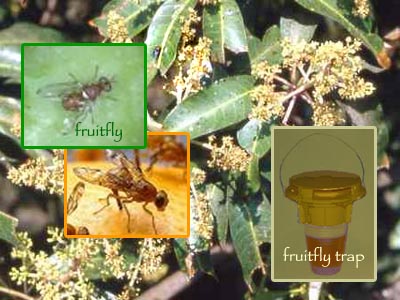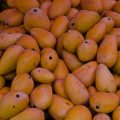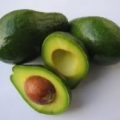Fruitfly infestation has caused great decline in the overall production of mangoes and has lessened the chance of Philippine fruits to penetrate the international market. For sometime, this infestation caused Philippine fruits to be banned in major importing countries.

The oriental fruitfly (Bactosera philippinesis) is a major concern in the Philippines, particularly in mango production. The country is producing thousands of metric tons of mango a year mostly fresh or processed. But out of this, only 8% of the total production is exported due to fruitfly infestation and the ineffective means of controlling them.
The infestation of fruitfly in mangoes is manifested by punctures in the flesh. Microorganisms penetrate into the flesh damaging the skin and causing the flesh to rot.
Researchers from the Mariano Marcos State University (MMSU) headed by Leticia A. Lutap, Salud F. Barroga and Marissa I. Atis conducted a field study on how to deliberately eliminate the fruitfly.
The study determined which particular seasons are the adult fruitfly abundant, the effects of the environment factors to the fluctuation of the adult fruitfly, and the most effective time of controlling fruitfly.
Through the years, a lot of measures have been identified to control fruitfly infestation. For instance, the integrated control method, which was introduced in Taiwan since 1975 has been used in the country up the 1980’s to eradicate this pest. The method used sterile flies, chemicals like methyl eugenol.
But the problem is on the application of the technologies. Farmers are not familiar on the best time to apply them. It is important to know the time and the extent of applying the control measure since fruitfly also infests other fruits in season such as guava, santol, jackfruit, papaya, siniguelas and avocado.
Fruitfly could reduce the yield of mango by as much as 23 percent. To avoid this loss, researchers from MMSU were able to develop a bait trap that wipes out the insects.
The bait trap is made of a plastic container. Inside is a fireboard, about an inch, which attached to the plastic container using a hook wire. To lure the fruitfly, methyl eugenol (PME) was used an poisoned with insecticide. Methyl eugenol is a hormone that attracts male fruitfly. The bait is soaked into the fireboard once in ten days and then installed on the mango trees.
After a year of investication results of the study showed that the fruitfly infestation was surely lessen. It reduced the fruitfly population to as much as 86%.
The researchers recommend the use of bait traps since this is not tedious unlike other control measures. Mango is not a yeat round crop, so application should be done during January to July only when population of fruitfly is its peak.
Source:
“Mango Fruitfly: Population Dynamics and Effectiveness of Bait Trap for its Control” by Leticia A. Lutap, Salud F. Barroga and Marissa I. Atis of Mariano Marcos State University. Batac 2906 Ilocos Norte. For more information, contact them at telephone nos. (077) 792-3131 or 792-3447 or email ilarrdec@laoag.amanet.net
By: Rita T. dela Cruz, BAR Chronicle, February 2002 Issue (Vol. 3 No. 3-4)





